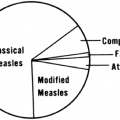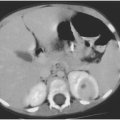Exposure Problems
In the patient who presents with symptoms consistent with an infectious process, an exposure history is one of the most important pieces of information to elicit. Many infectious diseases are first suspected on the basis of the exposure history. This involves asking if the patient or parent knows of any similar illnesses in the patient’s family, school, job, or community. However, it also involves specific questions about the patient’s personal history, such as hobbies, pets, travel, day care attendance, patient or parent occupation, sexual exposures, and self-medication or drug exposures. Exposure to persons with a chronic unexplained cough might be a clue to tuberculosis or pertussis. Unusual diet (such as ingestion of unpasteurized milk) or the use of well water may indicate an enteric pathogen as the cause of illness. A history of tick or mosquito bites is usually present in vector-borne illnesses. A previous history of blood transfusions provides for the possibility of several transfusion-associated infections.
This chapter provides a general approach to exposures so that a differential diagnosis can be generated once the history of present illness and the exposure history are known. Details of the clinical manifestations caused by particular organisms can be found in earlier chapters. The chapter ends with a discussion of a very common problem: head lice infestation.
Occupational and Environmental Exposures
Possible exposures of this type, and the associated microorganisms and syndromes to be expected, are listed in Table 21-1.
Blood Transfusion
With current testing procedures, the blood supply is much safer now than in previous decades.1 However, the exposure may have occurred in the remote past (such as a red cell transfusion given for anemia of prematurity), in which case it may not be recalled by the patient unless the question is specifically asked. Table 21-2 lists infections associated with transfusion of blood products, specifically packed red blood cells and platelets. In the 1990s, certain immune globulin products were implicated in transmission of hepatitis C virus infection.2 All immune globulin products are currently treated by a cold ethanol fractionation procedure, which is highly effective in inactivating known infectious agents.3
Animal Exposures
Children have a higher rate of exposure to animals because of their exploratory behavior. Several excellent reviews of animal-associated infections are available.4,5,6 The diseases associated with specific animals and the syndromes produced are shown in Table 21-3. Rabies is a frequent concern in animal bites. The approach to prophylaxis for rabies is outlined in Table 21-4.
Dog and Cat Bite Infections
Frequency and Clinical Patterns
Animal bites represent 1% of all emergency department visits, the majority involving children. Between 70–90% of these visits are caused by dog bites; boys aged 5–9 years have the highest incidence.7 Severe dog bites in children occur most frequently in those younger than 5 years and involve the head and neck. Large dogs that are familiar to the child are usually involved.8 Cats account for only 3–15% of animal bites,5 but because they result in puncture wounds, cat bites are much more likely to become infected (more than 50% as compared with 15–20% for dog bites).
Dog bites tend to be crushing injuries rather than clean, sharp lacerations. In children, three-quarters of dog bites occur on the face, neck, or head,7 and facial scarring is not uncommon. Bites to the head may be complicated by occult skull fracture and subsequent brain abscess.9
TABLE 21-1. OCCUPATIONAL AND ENVIRONMENAL EXPOSURES AND ASSOCIATED MICROORGANISMSa | ||||||||||||||||||||||||||||||||||||
|---|---|---|---|---|---|---|---|---|---|---|---|---|---|---|---|---|---|---|---|---|---|---|---|---|---|---|---|---|---|---|---|---|---|---|---|---|
| ||||||||||||||||||||||||||||||||||||
Infected bite wounds are characterized by swelling, erythema, and warmth at the site of injury.6 Purulent drainage, abscess formation, fever, regional adenitis, and leukocytosis are variable findings.10 The interval between the injury and evidence of infection is particularly short in cases of Pasteurella infection, often within 6–12 hours.
In asplenic children or those with other immunocompromising conditions, even a seemingly insignificant dog or cat bite may result in Capnocytophaga canimorsus infection, a cause of fulminant septicemia in these patients.11 Rarely, this organism causes sepsis in previously healthy persons with a recent dog or cat bite.12 Pasteurella can also cause bacteremia in immunocompromised hosts, with a mortality of 30% in one small series.13
Infecting Bacteria
In the largest prospective study to date, Pasteurella species were the most frequently isolated bacteria from both dog (50%) and cat (75%) bites.10 Most infections are polymicrobial and involve both aerobes and anaerobes. In one study, in which 107
infected dog or cat bite wounds were cultured at a reference laboratory, the median number of bacterial isolates per culture was five.10 After Pasteurella, the most common aerobes are streptococci, staphylococci, diphtheroids, and Neisseria species. Gram-negative enteric rods are an occasional cause. The most common anaerobic bacteria implicated include Fusobacterium, Bacteroides, Porphyromonas, Prevotella, Propionibacterium, and Peptostreptococcus species.10
infected dog or cat bite wounds were cultured at a reference laboratory, the median number of bacterial isolates per culture was five.10 After Pasteurella, the most common aerobes are streptococci, staphylococci, diphtheroids, and Neisseria species. Gram-negative enteric rods are an occasional cause. The most common anaerobic bacteria implicated include Fusobacterium, Bacteroides, Porphyromonas, Prevotella, Propionibacterium, and Peptostreptococcus species.10
TABLE 21-2. TRANSFUSION-TRANSMITTED INFECTIONS | |||||||||||||||||||||||||||||||||||||||||||
|---|---|---|---|---|---|---|---|---|---|---|---|---|---|---|---|---|---|---|---|---|---|---|---|---|---|---|---|---|---|---|---|---|---|---|---|---|---|---|---|---|---|---|---|
| |||||||||||||||||||||||||||||||||||||||||||
Initial Management
Tetanus immunity should be assessed (see Table 17-2), and the risk of rabies should be considered (Table 21-4). Pain control should not be neglected. Wounds should be explored to determine their depth and to see if any underlying structures (such as bone, joint, or tendon) are involved. Thorough irrigation and debridement reduce the rate of infection.14 Hand wounds have a high rate of infection and should generally not be sutured. Recent, noninfected wounds on other parts of the body can usually be sutured.
The use of prophylactic antibiotics is generally advocated for certain bites thought to be at high risk for infection. Examples include severe bite wounds with crush injury; puncture wounds that cannot be adequately irrigated; bites to the face, hand, foot, or genital region; and wounds in immunocompromised persons.15 A recent systematic review of eight randomized, controlled trials found that overall, prophylactic antibiotics did not appear to reduce the rate of infection after bites by dogs or cats, and that wound type (laceration versus puncture) did not appear to influence effectiveness. However, the infection rate for hand bites was significantly reduced by the use of antibiotics (2% versus 28%, odds ratio 0.10, 95% confidence interval 0.01–0.86).16 In none of the above studies was amoxicillin-clavulanate used as a prophylactic agent.
TABLE 21-3. ANIMAL EXPOSURES VIA BITES, SCRATCHES, MEAT INGESTION, OR CONTACT WITH ANIMAL PARASITE | ||||||||||||||||||||||||||||||||||||||||
|---|---|---|---|---|---|---|---|---|---|---|---|---|---|---|---|---|---|---|---|---|---|---|---|---|---|---|---|---|---|---|---|---|---|---|---|---|---|---|---|---|
|
Stay updated, free articles. Join our Telegram channel

Full access? Get Clinical Tree







